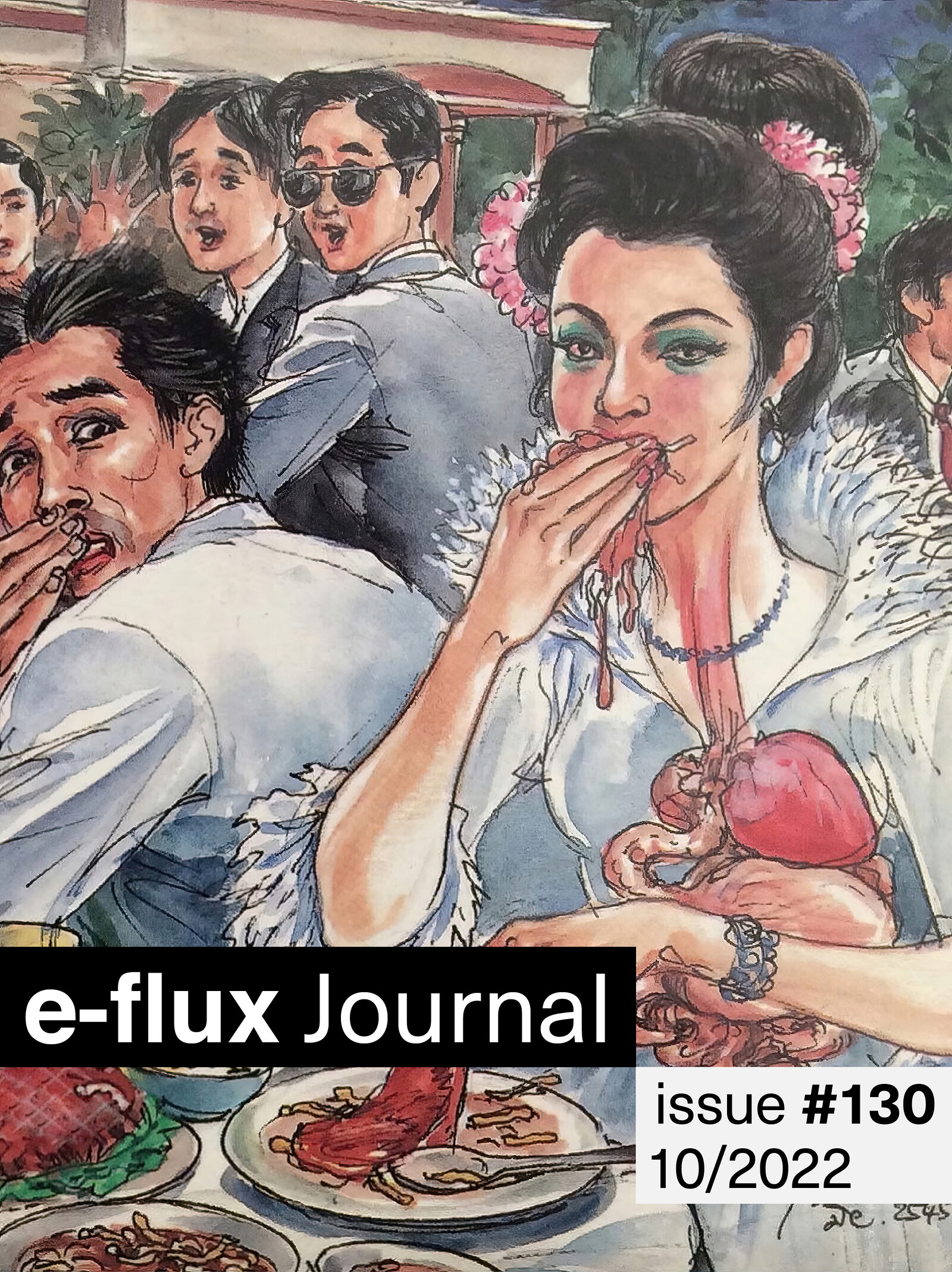Guest-edited by Eben Kirksey
With Caitlin Berrigan; Stephan Guttinger; Sria Chatterjee; Mel Y. Chen; Celia Lowe; Rachel Vaughn; Tim Dean; Hannah Landecker; and Eben Kirksey, Areeya Tivasuradej, Blake Palmer, Myint Than, Anne Atchara Changwong, Pietro Lo Casto, and Maya Kóvskaya
Perhaps you thought you could isolate yourself from viruses during the lockdowns of the coronavirus pandemic. Confined to your own apartment or small social bubble, you might have thought you were beyond viral influence. Think again. You have always lived within the virosphere—the vast but poorly understood universe of viruses.
With every breath, you inhale around six liters of air. Those few liters contain thousands (or even millions) of viral particles. Viruses enter your body each time you take a bite of food or a drink of water. Of the billion or so viral particles you encounter each day, some are capable of infecting human cells, while others belong to the insects, fungi, animals, and bacteria living within us, or near us. These infectious agents are world-forming as well as world-destroying. They are nomadic—constantly floating among cells, bodies, and populations, jumping species and moving between domains of life.
Viruses have been found in seemingly inhospitable locations like deep-sea vents, glacial ice, as well as extremely hot and acidic springs. Genetic diversity on planet earth is a story of viral diversity. Viruses are the most abundant life-form in the world and more than 99.9 percent of viral species remain unstudied. Simply put, viruses are winners in the game of life.
Viruses have lurked on the margins of cultural theory ever since Deleuze and Guattari suggested that “our viruses make us form a rhizome with other creatures.” According to Patricia Clough and Jasbir Puar, in the age of the internet virality became “a form of communication and transmission across various domains: the biological, the cultural, the financial, the political, the linguistic, the technical, and computational.” In recent years, however, viral theory in the humanities and social sciences hasn’t kept pace with the scientific initiatives starting to peek into the virosphere’s vast unknown realms. This special issue of e-flux journal seeks to reckon with the multitude of invisible viral agents waiting to disrupt, detour, and reroute established modes of life.
As the waves of the coronavirus pandemic gradually recede in intensity, there is an opportunity to reflect on the full pluripotent possibilities of viral infections. The pandemic demonstrated new possibilities for making swift and dramatic changes to collective human behavior to protect the vulnerable among us. Yet, as human industry, infrastructure, and technology disturb the atmosphere and the virosphere, we are all becoming vulnerable. When many institutions and politicians continue to operate like virulent parasites, learning how to think like symbiotic viruses might offer ways to infect and disrupt their dominance, to reveal a way out of contemporary planetary predicaments and open new generative fields of possibility.
—Eben Kirksey and the Editors
Eben Kirksey—Editorial: Welcome to the Virosphere
While scientists search the human genome for DNA sequences that set us apart from other species, evidence suggests that we share much of our genetic identity with viruses. Rhizomorphic connections with other creatures, mediated by our viruses, may be happening all the time, along thousands of lines of flight. Infectious agents link humanity with other creatures who live with us in shared multispecies worlds. We are kin with our viral relations.
Caitlin Berrigan—Kinship Is Anarchy
Survivance is dependent upon negotiating and being-with toxic relations as much as chosen and desired ones. Furthermore, discerning the toxicities from the nourishments within the very same relationship is a familiar task of anguish. This is the practice of being-with the kinships we do not choose—human and more-than-human. This is the practice of living inside of contradiction and contamination.
Stephan Guttinger—Viral Things: Twelve Keywords
There are a lot of unknowns in human interactions with viruses, especially when we are facing a newly emerging virus. But the idea of viruses as “things” provides an overall strategy that promises to leave us mainly with known unknowns.
Sria Chatterjee—Contingent Contagion
Seeing is a political act. Who has the right to visualize what and how? I am interested not just in the ways that scientists, artists, and people in their everyday lives have made the virus visible but also in what other processes—both historical and contemporary—viruses make visible.
Mel Y. Chen—Death to Death / Life by Cuts
Death by a thousand cuts is the province of relentlessly exposed and/or targeted, otherwise compromised peoples who are wise to their desired or planned termination. It is also the province of thinkers richly equipped with a theoretical imagination toward a species terminus, one that has been rationally preordained by climate change’s inevitabilities, allowing that teleology to predominate all other narratives of vulnerability. But is a species terminus fairly labeled “death”?
Celia Lowe—The Viral Real
You think a dive into Covid conspiracy theory unreality couldn’t happen to you—I’m not so sure. Didn’t many of us not long ago confidently assert in the linguistic turn that the world was created entirely through language and discourse? With enough time to do our “own research” and few boundaries around the vectors critique can take, one might end up joining a “great derangement” rather than exposing hidden truths. Isn’t it awfully easy to lose sight of the real?
Rachel Vaughn—Viral Junk
Waste’s hauntology of bodies as ecosystems, and the alterlives created in the wake of harmful or undesirable exposures, help to illuminate viral junk and its pluripotent capacities within genomes. It is a reminder that microbes, viruses included, are us. Ancient viral exposures remaining in the genome may play a continued role in gene expression or viral memory.
Tim Dean—Barebacking in Restaurants and Other Fantasies of the Virosphere
We become intimate through the air we share. With SARS-CoV-2, one need mingle no bodily fluids, only breath: the atmosphere is our medium of intimacy. In the biopolitics of respiration, what we are sharing is effectively our insides.
Hannah Landecker—Viruses Are More Like Cone Snails Than Hijackers
Viruses are not like spaceships, and cells are not just like twentieth-century semitrailer trucks, armored vehicles, or passenger jets whose resources can be plundered and whose operators can be coerced into unwanted journeys. As with many apparently innocuous explanatory tropes, this figure of the viral hijacker perhaps hides as much as it reveals.
Eben Kirksey, Areeya Tivasuradej, Blake Palmer, Myint Than, Anne Atchara Changwong, Pietro Lo Casto, and Maya Kóvskaya—Getting Lucky in Thailand: Or How to Coexist with Coronaviruses in Multispecies Contact Zones
It would be easy to react with disgust to this scene. Here we were, in a place that smelled like a dank alleyway in New York, where people were apparently exposing themselves to viruses that had the potential to spawn a new pandemic. Lingering in this multispecies contact zone, we contemplated the ongoing exchanges of viruses between people and other species, while thinking with care about the religious significance of the prayers.


